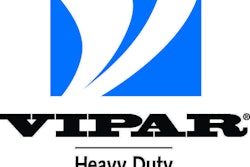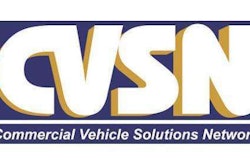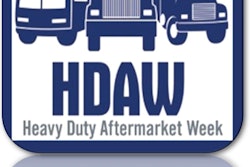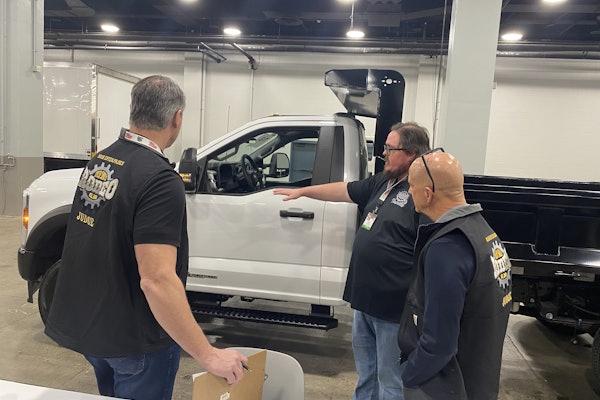The heavy-duty aftermarket is an industry of individuals. Talented, driven and financially savvy entrepreneurs populate all corners of the marketplace, and each equipped with different skill sets, these leaders have built strong businesses in an increasingly competi- tive marketplace.
But just because a business is in the black doesn’t mean it’s reached its peak. Aftermarket business leaders that operate in isolation, without taking the time to get involved in the industry at large, miss out on a wealth of valuable information.
Through active involvement in industry groups and organizations, aftermarket business leaders can ensure their businesses are prepared to remain successful for generations to come.
One of the biggest advantages of being involved is being informed. Involvement keeps you in the loop.
News travels through the trucking industry at a rapid pace, and if you’re not actively seeking it out, you can miss a lot.
RELATED: Check out this list of the top aftermarket events
Educational sessions at most of today’s trucking industry events are designed to inform attendees on current or futures issues facing the industry. This is especially true at aftermarket specific events, like Heavy Duty Aftermarket Week (HDAW), marketing group meetings and the Commercial Vehicle Solutions Network’s (CVSN) Aftermarket Distribution Summit.
“At our meetings we try to increase our members’ business acumen and give them tools to strengthen their operations,” says Don Reimondo, president and CEO at HDA Truck Pride. “We work to provide value you can’t get just sitting behind your counter.”
But news doesn’t just come from trade shows.
There also is a wide variety of trade associations operating in the aftermarket. Most of these trade associations focus on one area of distribution, sales or service, and typically are the best sources of news and information related to their topic within the industry.
And the network- ing offered by both mediums might provide the fastest source of news found anywhere in commer- cial trucking. If you want to know what’s going on in a specific area of the market, make friends with the people who know.
“You cannot operate in this business in a vacuum,” says Bill Wade, managing partner at Wade & Partners, an aftermarket consulting firm. “People in this business love this business and people outside of this business don’t have a clue. If you want to talk to other people about your business, you have to talk to someone who faces the same problems as you.”
“The networking you can get at these events is unbelievable,” adds Edward Neeley, president at Truck Supply Co. of South Carolina and HDAW 2014 co- chair. “I don’t know why you would even consider working in an industry where you have no contact or relationships with anyone else.
“I talked to a lot of guys last year [preparing for HDAW] who would ask ‘What’s the benefit of going?’ and I’d respond, ‘What’s the benefit of staying home?’ You’re not going to learn any- thing new there.”
Getting involved also puts you in touch with the best educational and training resources available.
A repair garage owner who spends 80 percent of his time under a truck might be a great technician, but unless he spends his other 20 percent studying advancements in vehicle technology, he’s probably not the most informed.
“If you’re a service provider and you don’t belong to any industry associations you might as well live in a cave. You have no clue what’s out there,” says Gordon Botts, president at Botts Welding and the American Council of Frame and Align- ment Specialists (ACOFAS).
Today’s trucks are extraordinarily ad- vanced. A 2003 transmission might have more in common with a 1973 model than last year’s iteration. If you want to repair all three, you have to know how they’ve changed.
That takes training.
The training offered by OEMs and heavy-duty suppliers was cut drastically during the 2008-2009 recession, Botts says. Only recently has it started to recover, and in some cases in much smaller operations.
The days of a premium supplier coming to a one-location, five-bay garage for product training are likely over. Small- scale independents now must be willing to join service associations (and travel to their training courses) to stay informed.
“You don’t have the access you used to have in this industry,” says Wade. “Now suppliers offer access on a group basis, and if you want their information you better be part of that group.”
Involvement can provide wonderful access to leadership and business training as well. In addition to educational sessions on hot-button industry issues, aftermarket trade events also focus heavily on training. This includes topics such as succession planning, promotional pricing guidelines, excise tax, the Affordable Care Act and employee motivation, to name a few.
“We try to take a look at industry issues, not just for the good of the distributor but also for protection of the entire aftermarket channel,” says Steve Crowley, VIPAR Heavy Duty president and CEO.
In some cases these organizations even provide webinars and satellite training programs, meaning even if you can’t make the annual meeting you can still learn. You just have to sign up.
“It’s all about finding the organization that has the training you need,” says Botts. “If you’re a shop owner, you better know how trucks work. If you’re a sales manager, you should want to be part of the group that teaches sales.”
And there are benefits to streamlined training for an industry, says Tim Kraus, president and COO of the Heavy Duty Manufacturers’ Association.
“Business practices that make sense make the entire channel better if everyone agrees to them,” he says.
Marketing is another area where being involved comes in handy, as membership in trade associations can be a valuable selling point with prospective customers.
By joining an industry association with a positive reputation, you are able to transfer some of that organization’s good will to your business. And if you uphold your responsibility as a member company to that organization with top-quality performance and customer service, you are indirectly marketing for your fellow members and the association as well.
Buying groups in particular offer a significant marketing advantage for independent distributors and their service providers.
Both VIPAR Heavy Duty and HDA Truck Pride have expansive national networks in the U.S. and Canada, which allow them to provide comprehensive solutions to both regional and national fleets.
For one- or two- location distributors with a minimal footprint, this opens up a wealth of large customers previously unattainable.
The groups also feature networks for approved service providers. These facilities source parts from members of their affiliated group, and meet a baseline level of performance.
While not as streamlined as an OEM dealer network, they still offer independent operations the caché of a national support network customers can rely on.
“I think from our standpoint we make sure the value we bring outweighs the costs of being an active member in our organization,” says Reimondo.
Industry involvement also gives you a voice in political and regulatory discussions.
This is extremely important.
Independent aftermarket businesses don’t have the clout to influence change on their own, but can be forceful when working together.
This is an area where CVSN has thrived. The organization’s 2011 After- market Distribution Summit in Arlington, Va., included a legislative summit where business leaders were given the opportunity to meet with their representatives in one-one-one meetings to discuss issues facing their businesses. CVSN also has been active in the heavy-duty Right to Repair debate, as a founding member of the Commercial Vehicle Right to Repair Coalition. Working on behalf of the independent aftermarket, the Coalition is in early discussions with engine manufacturers to gain the same access to diagnostic repair code information as dealers.
Both situations are possible thanks to member involvement, CVSN leaders say. A group of business owners has a much stronger voice than any one person.
“Not every issue faced in the aftermarket deserves that kind of attention, but when they do, you have to be there,” adds Wade. “You have to be involved and be willing to do something.”
And it’s important to note being involved doesn’t just help your business. It’s also good for the indus- try as a whole.
“Anything that allows for suppliers to get together with their existing customers for a few days is valuable,” says Kraus. “It gives both sides the chance to work together and make their business relation- ship better.”
Sitting at home won’t move the industry forward.
“The trucking industry is really booming. The af- termarket needs to keep up with that,” says Neeley. “If you don’t keep up you’re going to be left in the dirt.”
“I think a lot of opportunities these programs offer have been directly impacted by people who take time out of their business to try and better
the industry as a whole,” adds Jeff Paul, director of marketing at VIPAR Heavy Duty. “The future of this industry is going to be decided by those leading this industry, and taking the time to make it better.”











